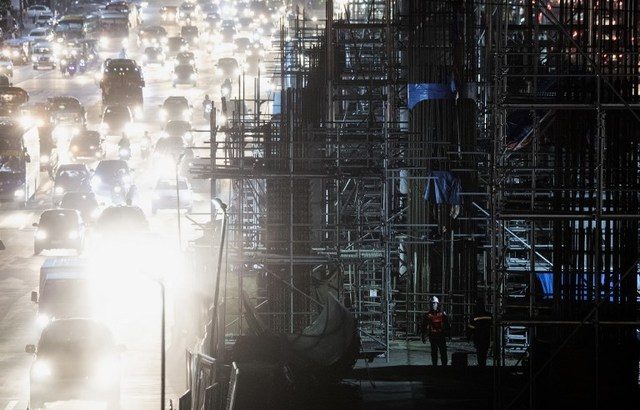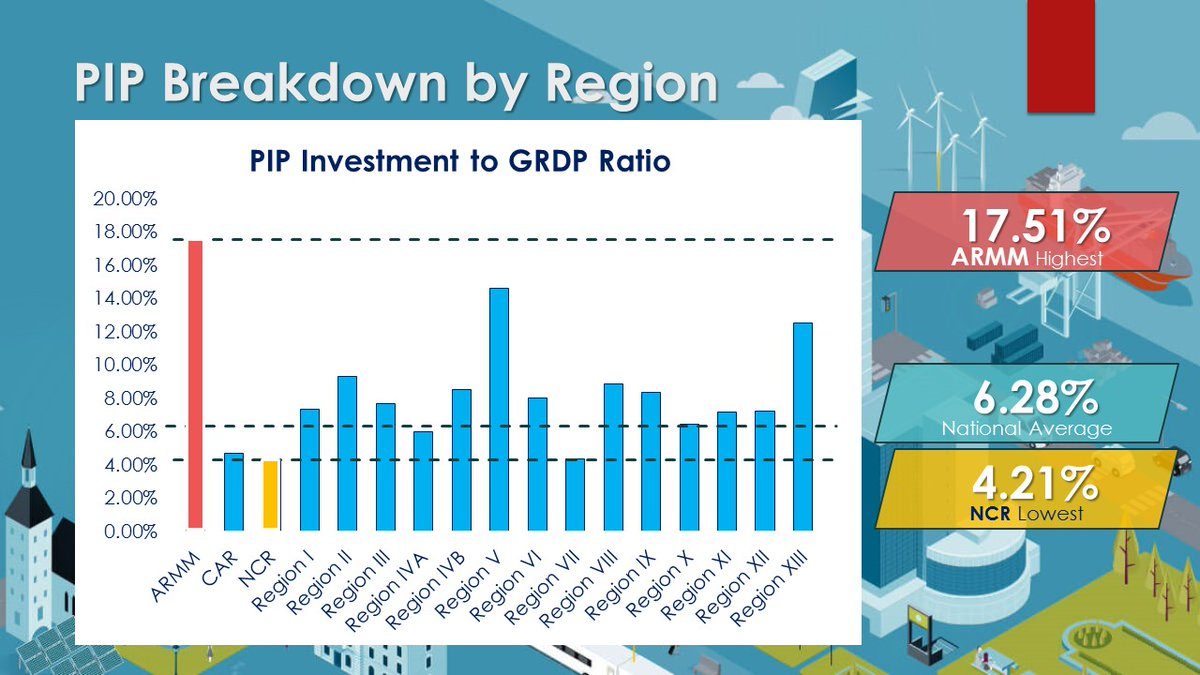SUMMARY
This is AI generated summarization, which may have errors. For context, always refer to the full article.

MANILA, Philippines – Socioeconomic Secretary Ernesto Pernia said that 43 out of 75 flagship priority projects for implementation is a “good batting average” for the “Build, Build, Build” infrastructure program.
In a media briefing on Thursday, July 26, Pernia explained what experts call the “slow” rollout of infrastructure projects.
“Forty-three [43] are under implementation – implementation includes budgeting, financing, detailed design, design planning, and procurement are part of implementation. But seeing cranes and heavy equipment will come after all these nitty-gritty steps are addressed, secured,” Pernia said.
It’s “a pretty good batting average, I think,” he said. “Forty-three out of 75 [will be done] in two years time,” Pernia added.
Of the total projects, 6 are being constructed while one has been completed. (READ: Hits and misses of Duterte’s infrastructure push)
National Economic and Development Authority (NEDA) Undersecretary Rolando Tungalan said that the public should not disregard the efforts of the government.
“You should not do us disservice just because only 7 have started construction. This pace of movement – from approval to getting to implementation – is a hastened pace. It is [better] than being approved then nothing will happen. But you will see the cranes towards the end of the year,” Tungalan said in a mix of English and Filipino.
In 2017, NEDA had identified high-priority projects under the “Build, Build, Build” program considered as “high-impact.” These projects are implemented under the public works, transportation, energy, and agriculture departments.
Regional development
Another undersecretary defended the rollout pace, saying that the public should also look into what’s happening in the regions.
“Let’s not look at the 75 flagship projects, let’s also look at the regions. Most of these are [infrastructure] programs with 8.93% of the 11,000 projects, or 1,011, completed under this administration and 53.16% or 6,245 projects that are ongoing,” Undersecretary Adoracion Navarro said.
“That should add to the picture of the state of project implementation under this administration,” Navarro added.
Pernia said that infrastructure investments are “equitably distributed” across all regions to “positively contribute to regional growth.”
He said that while mega urban-industrial regions such as Metro Manila, Calabarzon, and Central Luzon contribute the largest share to the Philippine economy, infrastructure investments are not concentrated in these areas.
“Investments are distributed equitably. For one, the Autonomous Region in Muslim Mindanao, despite having the lowest GRDP (gross regional domestic product), had the highest investments under the Public Investment Program to GRDP Ratio,” Pernia said.
“We are confident that the government’s infrastructure push will positively contribute to regional growth. Regions outside Metro Manila, most especially, stand to benefit from the government’s Build, Build, Build campaign,” he added.

The Philippine Investment Program contains the government’s list of priority program and projects from 2017 to 2022, as well investment requirements of each region depending on the area of impact vis-a-vis its population.
Autonomous Region in Muslim Mindanao received the largest share of investments among regions at 17.51%, while Metro Manila received the lowest at 4.21%.
NEDA said that there are some 4,490 projects currently under the investment program, with ARMM having at least one-third of the total projects at 1,340.
“The end goal of the government’s massive infrastructure program is to address inequalities. The country needs quality infrastructure that will make regions better connected and help improve their efficiency and productivity,” Pernia said. – Rappler.com
Add a comment
How does this make you feel?
There are no comments yet. Add your comment to start the conversation.